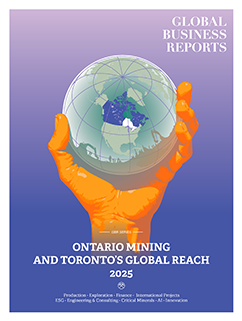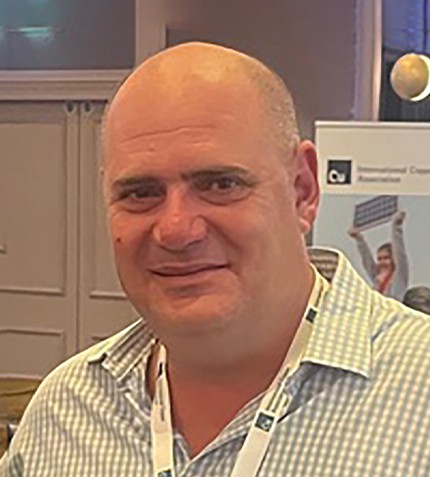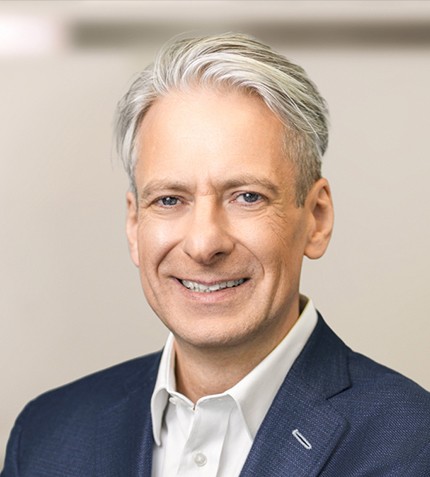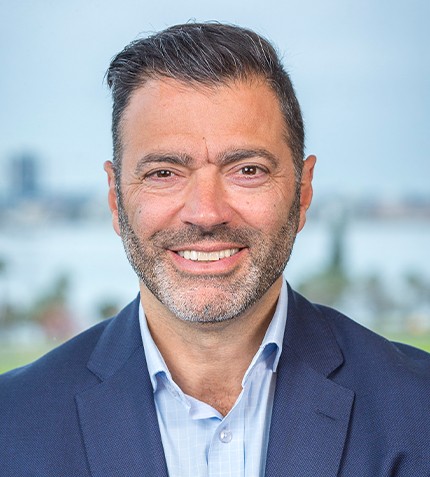
"We observe a rising demand for sophisticated approaches to screening that achieve the optimal balance of productivity and equipment longevity."
RELATED PUBLICATION
ARTICLES FROM THIS PUBLICATION
Karen Thompson
PRESIDENT, HAVER & BOECKER NIAGARA
Can you provide an overview of Haver & Boecker Niagara’s operations in Ontario?
Haver & Boecker Niagara, located in St. Catharines, Ontario, has a rich history dating back to 1872 and became part of the Haver & Boecker Group in 1998. Since our inception, we have maintained a strong commitment to mineral processing and high-quality equipment production. Our Ontario facility has been operational since 1930, fostering robust relationships in the mining sector across Canada and the US. Recently, we unveiled our new generation F-Class Vibrating Screen, developed through the collaboration of our teams in Brazil, Germany and Canada. This innovative machine has a robust huck-bolted design and user-friendly maintenance features, which are increasingly in demand as producers look for longevity and efficiency from their equipment.
Haver & Boecker Niagara holds a unique position as one of the few stationary equipment manufacturers of its type in Canada. This distinction allows us to offer significant advantages, such as eliminating complexities related to the US exchange rate for our Canadian customers. We take pride in our role in the mining sector and our ability to deliver tailored solutions to our customers.
What trends in demand are you observing for your services in Ontario?
In Ontario, we are seeing a significant trend towards the demand for diagnostics and monitoring equipment. Producers are increasingly interested in AI-driven technologies to facilitate preventative maintenance and reduce unplanned downtime.
Additionally, there is a growing need for longer lasting screen media. This focus on durability reflects the mining sector's broader trend of maximizing operational efficiency while minimizing costs, as downtime can have substantial financial implications.
Optimizing the screening process is a central focus for us as we strive to enhance productivity and efficiency. We observe a rising demand for sophisticated approaches to screening that achieve the optimal balance of productivity and equipment longevity. By improving these processes, we help our customers maximize production output while minimizing operational costs, ultimately aligning with broader industry goals of efficiency and sustainability. Haver & Boecker Niagara supports this shift by providing technical expertise, training and services that emphasize predictive maintenance and performance optimization.
How has the skilled labor shortage affected Haver & Boecker Niagara and its operations?
The skilled labor shortage has become a pressing challenge but also an opportunity for Haver & Boecker Niagara, largely due to a generational gap where experienced professionals are retiring without enough younger workers to replace them. This shortage allows us to step up our involvement with customers, offering more hands-on support and technical assistance to fill the void. While we face the same labor challenges as our global counterparts, our Ontario manufacturing base allows us to address North American customer needs effectively. Being local enables us to provide tailored solutions and strengthen customer relationships while adapting to regional demands.
We actively engage with local universities and colleges to support mining engineering programs and technical training initiatives. By partnering with educational institutions, we help cultivate a skilled workforce to meet future industry needs.
What is the benefit of being located in Ontario?
Being based in Ontario specifically allows us to serve North American customers as a true local provider. This eliminates reliance on overseas sourcing, reducing shipping costs, lead times and other complications. Moreover, our local operations support Ontario-based supply chains and community initiatives. Our proximity enables us to respond quickly to customer needs and regulatory compliance, ultimately improving satisfaction and operational efficiency.
Our global footprint allows us to diversify our operations and better serve various markets, as each location addresses distinct geographical demands dictated by regional mining activities and regulatory requirements.
What kind of R&D work is happening at Haver & Boecker Niagara?
Our research and development efforts are concentrated on advancing diagnostic tools essential for the future of mining and manufacturing. We are particularly focused on developing predictive and preventative maintenance technologies for vibrating screens and related equipment. In addition to diagnostics, we are exploring innovative solutions for emerging rare minerals and striving to reduce CO2 emissions in production processes. Our R&D initiatives aim to align with sustainability goals while enhancing operational efficiency across our product offerings.
Our holistic approach encompasses everything from equipment diagnostics to resource optimization, ensuring we are well-positioned to address evolving industry demands and challenges.











